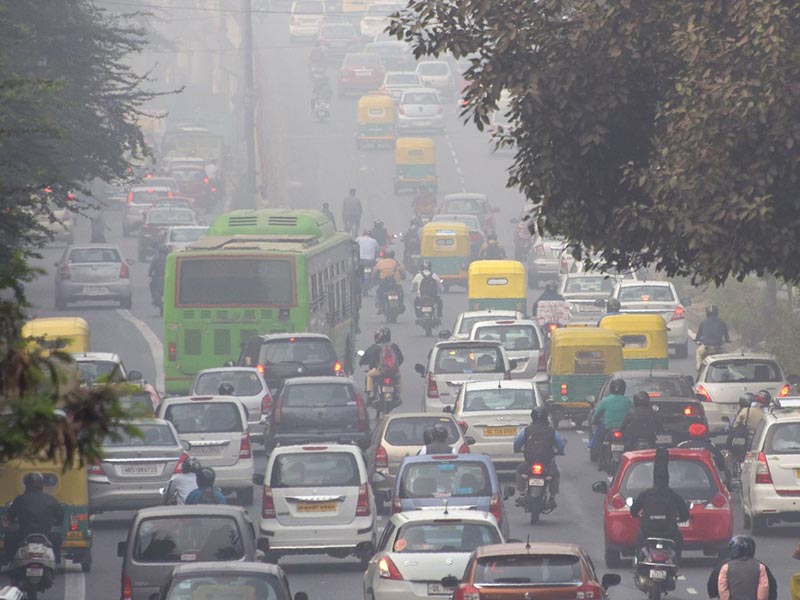By Kannan Gopinathan
If you ask a city dweller today what troubles her more, city traffic or city pollution, she would most likely give you a stare. It is definitely both and equally so. But what we often miss out is that the tremendous increase in the kilometers we travel is a huge contributor towards both problems.
UN’s Shanghai Manual for Urban development, in 2012, proposed an Avoid, Shift and Improve strategy for developing sustainable urban transport solution. The `avoid’ strategy addressed the questions as to why did a citizen have to travel, and why did she have to travel that much. The `shift’ strategy addressed the question as to how did she travel, and the `Improve’ strategy, an incremental strategy focused on how to improve the systems via technology and better transport practices.
Our overwhelming focus has been on the `shift’ strategy, i.e. how to shift people from private transport to public transport. Off late use of non-motorized transports like cycling or walking are also seen encouraged. Entry of Taxi aggregators and taxi sharing apps like Uber, Ola etc has further opened a new avenue as they promise to provide comfort of private transport at a reduced carbon, traffic & parking space footprint. But due to various extraneous reasons they are yet to be seen as part of a solution and this may need a revisit soon. There is also a need to factor in the negative externality to private transports. Thus while various pull factors, like buses with ACs, free wifi etc, BRTs etc are being tried, push factors to dis-incentivize private transports have been far and few.
Contrary to the suggestions in the Shanghai Manual, we find that the avoid strategy, which seeks to avoid unnecessary travels and reduce the per capita km travelled, is not given enough focus in our discussions. Avoid strategy essentially has two components: An urban master plan component and an ICT component. The urban master plan component makes use of transit oriented development, mixed use development techniques etc to plan cities around transport rather than the other way around. Thus, if you have your office, shops and home in the same neighborhood, your need to travel is greatly reduced. But as one can see, redesigning urban master plan, though the most effective, is more of a long term strategy. For cities like Delhi and Mumbai where construction has already happened based on a segregated zoning, this strategy may not give us any immediate respite.
But ICT gives us an option of access without having to be mobile. Here there is a lot of scope and a lot is being done on a daily basis. But sadly, these efforts are seen as an ease-of-transaction solution, and not as part of the integrated urban accessibility solution. For example, as Governments make more and more services online, it reduces the need for people to travel. As companies encourage work from home, the per capita km travelled reduces. As people shop online, the traffic and pollution caused by an actual trip to shopping places reduce. Yes, these are all happening, but are not yet recognized as a possible answers to our urban nightmare.
It is important to identify ICT as an integral component of a sustainable urban accessibility solution, as only then can we design our incentive-disincentive structure around it. Thus in G2C activities, where both an online and offline process is available, the online route can be made free of cost, whereas over-the-counter service can be charged, thus discouraging people from taking the unnecessary travel to the Government offices. Neighborhood common service centers can facilitate online application to help out the rural population. Similarly, governments can decide to cut down on meetings and favor videoconferences. Courts can pitch by conducting a share of their hearing through VCs. Though it may seem outrageous, even schools and colleges can be roped in to provide virtual classroom options to their students, instead of insisting that every student should go to the class every day.
Private companies can be encouraged to calculate the travel footprint of its employees and publish it. Further they can be incentivized to reduce it through tax measures or by including it in CSR. Right incentives will encourage companies to innovate and find own solutions to reduce the travel footprints. E-commerce activities and in-home entertainment options are helping us reduce travel. Shouldn’t we be encouraging them? What if we provide incentives to companies if they agree to come under a green audit and show improvement?
We have reduced accessibility to mobility and mobility to cars. Technology is giving us an option to take a step back and re-conceive mobility as only a subset of accessibility solution. Especially as cities get smart and work to bridge digital divide, the slogan ‘more MB and less KM’ may be one to adopt and work on.
Disclaimer: The opinions expressed within this article are the personal opinions of the author. AlignIndia does not take any responsibility for the content of the article.
Kannan Gopinathan (An IAS Officer of 2012 batch, AGMU Cadre, currently posted as SDO (Civil), Hnahthial, Government of Mizoram)


